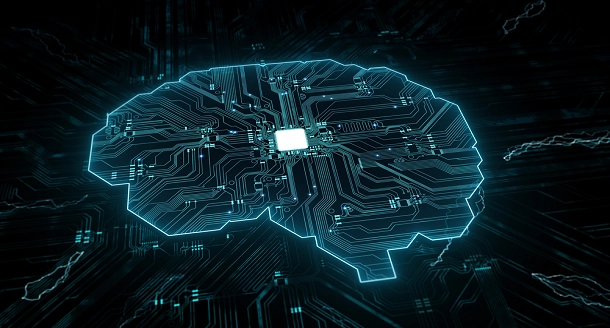
The artificial intelligence industry has seen many highs and lows over the last half-century. In the early decades, the hype around the field was high, with many scientists believing that human-level AI was just around the corner. Unfortunately, these promises were not delivered and the industry experienced an “AI winter” in which interest and funding decreased significantly.
Machine Learning
Machine Learning is a powerful technology that enables computers to make predictions based on the data that it has access to. It requires a large data set and algorithms that allow the computer to learn from the data. The more data a machine has access to, the better the machine learning algorithms will get. However, the strength of these algorithms is only as good as the data that it can model.
Machine learning is already in use in many places. For instance, you can get directions to any location by using Google maps, which will automatically show you the most direct route to your destination. As AI continues to improve, it will also make customer experiences more automated. AI assistants like Siri and Alexa are already available, allowing users to perform various tasks by just saying certain commands.
AI
Machine Learning and AI are two major branches of artificial intelligence research. The goal of AI is to develop machines that perform specific tasks, such as making decisions and interpreting data. This process relies on a combination of learning, reasoning, and experience to make decisions. It’s possible to automate many tasks using AI. Future of AI: how Artificial Intelligence is Transforming the World.
Although these technologies are powerful, they can’t completely replace humans. The aim is to augment human intelligence and provide new insights. For example, artificial intelligence can improve company productivity by providing employees with new insights.
Neural Networks
AI and machine learning are both methods for making decisions by learning from data. The most advanced forms of machine learning are called deep learning and neural networks, and they are often called “magic.” Although the process of machine learning is similar to the human brain, there are some significant differences.
In a traditional machine learning model, a programmer would choose the features that were most relevant to the training set. Deep learning, on the other hand, would learn to identify and classify objects based on these features automatically. Deep learning is a relatively new branch of AI based on artificial neural networks.
Reactive Machines
Reactive Machines do not store memories and operate based on inputs, so they do not need to learn and use past experiences to improve their performance. A classic example of a reactive machine is IBM’s Deep Blue, a chess-playing supercomputer.
Reactive Machines are the simplest type of AI, and they can only interact with their environment and perform specific tasks. They are used in situations where a robot must interact with its environment, like a robot that must respond to a specific stimulus. While the AI technology that makes this possible is very advanced, it is still quite primitive compared to a human-controlled robot.
Supervised learning vs Reinforcement learning
In machine learning and artificial intelligence (AI), there are two types of learning – supervised and unsupervised. Supervised learning involves mapping labelled data to known outputs. Unsupervised learning, on the other hand, is a form of learning in which the algorithm is given a dataset but does not know what the expected output will be. Often, this approach is used to find patterns and groups of similar data.
Supervised learning is often used for classification tasks, where inputs are sorted into one of a number of categories or classes. This can be anything from filtering spam emails to classifying customer feedback as positive or negative. It can also be used for feature recognition, such as classifying handwritten letters and numbers. It is also useful for classifying drugs.
Applications of machine learning and AI
Applications of machine learning and AI are used in many areas, from regulating the traffic flow in cities to identifying the behaviour of endangered marine species. With the proper training, such algorithms can capture images in real-time and interpret the surrounding environment. They can also help with natural language processing, which allows computers to learn the language of humans. In fact, AI can even help in detecting diseases and provide therapies to patients. Regardless of the industry, machine learning and AI are becoming more relevant than ever.
In the world of retail, for example, applications of machine learning and AI have already become commonplace. Google, for example, tracks your search history and recommends ads based on it. Amazon, meanwhile, generates over 35% of its revenue from product recommendations.
Limitations of Machine Learning
AI and machine learning are powerful technologies, but they do have their limitations. Machine learning can only be effective for situations where there is a great deal of data and thousands or millions of examples. A prime example is Google Translate, which was made possible by the sheer amount of information available on the Internet. For some situations, however, machine learning can help automate decision-making and save time and money.
The use of neural networks has its limitations. Neural networks require a great deal of training data. They may not be very efficient in the long run, but many researchers are considering adding physical constraints to their algorithms. Having more data is a good solution, but artificial data can also fool neural networks.
Author Bio
Jesse Pinkman is a research-based content writer, who works for Cognizantt, a globally recognised wordpress development agency uk and Research Prospect, a Tjenester til at skrive afhandlinger og essays. Jesse Pinkman holds a PhD degree in mass communication. He loves to express his views on a range of issues including education, technology, and more.


